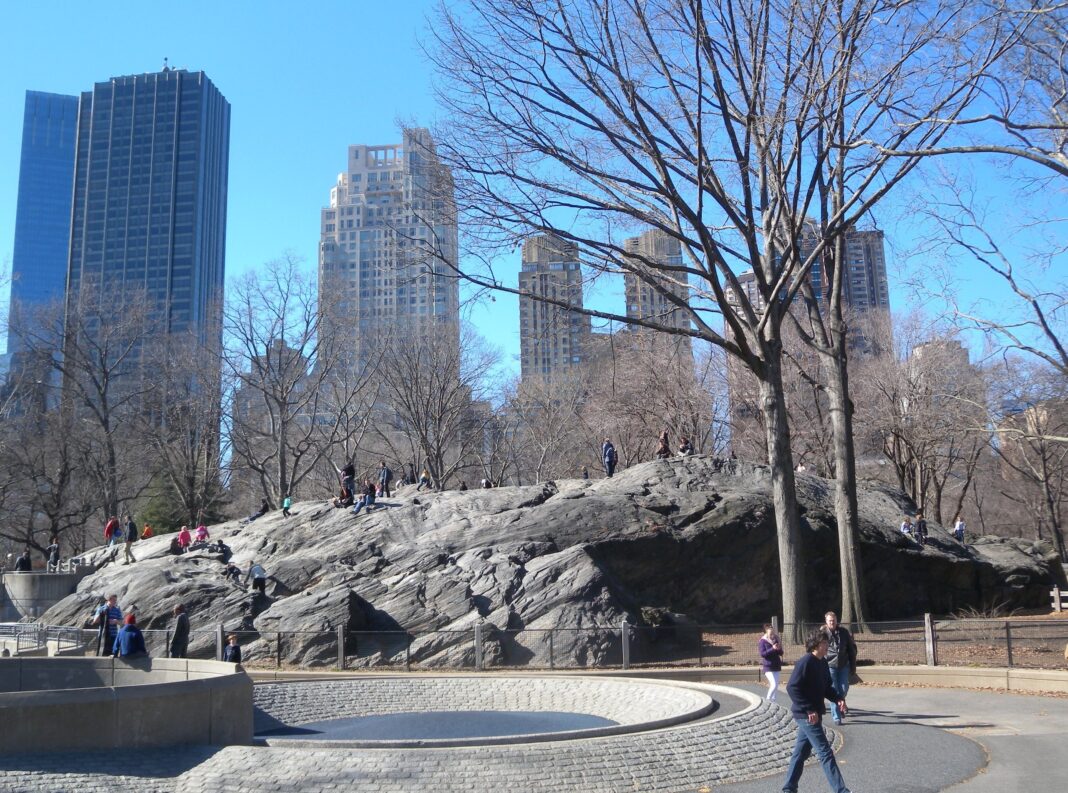Rat Rock, as its commonly called, is a prominent feature in New York City’s Central Park, stands as a testament to the historical decision to preserve the natural Manhattan schist formations within an urban setting. This choice by designers Frederick Law Olmsted and Calvert Vaux offered individuals like Ashima Shiraishi, a world-renowned climber, her first touchpoint with the climbing world. Just steps from Columbus Circle, Rat Rock is not only a climbing haven but also a piece of natural history, showcasing the very bedrock supporting New York’s iconic skyscrapers.
Key Points:
- Location: Rat Rock, also known locally as Umpire Rock, is situated in the southern region of Central Park, near Columbus Circle.
- Impact: The rock’s existence has influenced countless New Yorkers and visitors, serving as a gateway to rock climbing.
- Significance: The schist formation represents the city’s geological foundation and connects climbers with the Earth’s ancient past.
- Name: It was so named after the rats that would frequent there at night.
Climbers have assigned various problems to Rat Rock, leading to multiple routes that offer a range of challenges suitable for various skill levels. The area has naturally become well-trafficked, with climbers from all walks of life contributing to its vibrant scene.
- Accessibility: Rat Rock and other Central Park boulders are uniquely accessible compared to other outdoor climbing spots.
- Community: The climbing community in Central Park is diverse, inclusive, and characterized by a rich ethos that contrasts with traditional, more homogenous outdoor sports cultures.
Often, the climbing community in Central Park goes beyond the sport, acting as stewards of their environment. Without formal organizations to oversee the care of these natural climbing areas, individuals take it upon themselves to maintain the cleanliness and integrity of the space. Climbers like Marc Adrian become everyday conservationists, voluntarily preserving the park’s natural state for everyone’s benefit.
Cultural Significance:
- History and Recovery: Central Park’s boulders are pieces of a glacial past, marked by grooves and holding stories of ages long gone.
- Connection: Climbers feel a deep sense of interaction with history when touching the same holds that have been used for generations.
Rat Rock and other climbing spots within Central Park, such as Chess Rock and the Westside Outcrops, reflect both the natural beauty of Manhattan schist and the city’s recreational opportunities. Outdoor climbing here contrasts with the more commercialized indoor climbing gyms, offering a democratic and authentic climbing experience. Here, anyone with a pair of climbing shoes and chalk can join in, free of charge.
- Demographics: The outdoor climbing scene in Central Park is notable for its diversity, welcoming climbers of color, queer, and trans individuals.
- Psychographics: The range of climbers spans enthusiasts to professionals, all finding something unique in the park’s rocky terrain.
Structured Improvements:
Dedicated climbers contribute to the park’s upkeep, embodying an informal alliance of care. Central Park’s climbing community exemplifies an active part of New York life, where the drive to scale these natural monuments reflects not only a sporting pursuit but also a commitment to the historical and environmental fabric of the city. As climbers etch their paths across the stone, they continue a tradition that extends beyond mere recreation, embedding themselves into the legacy of Rat Rock and New York City itself.
Common Questions About Rock Climbing in Central Park
Central Park’s Premier Bouldering Locations
Central Park boasts several notable bouldering spots that cater to climbers of various skill levels. Among them:
- Rat Rock: Known for its accessibility and variety of routes.
- Worthless Boulder: Offers challenging problems for experienced climbers.
- Cat Rock: Provides more routes and tends to be less crowded.
Accessibility of Bouldering for New Climbers
Yes, beginners can enjoy bouldering in Central Park. There are areas with flat landings and beginner-friendly routes. Rat Rock in particular has several problems that are perfect for those just starting out.
Essential Bouldering Gear for Central Park
Climbers should consider bringing the following items:
- Climbing shoes for better grip
- Chalk to improve hand friction
- A bouldering pad for safety
- Water and snacks for hydration and energy
Carrying a small first aid kit is also advised for dealing with minor scrapes or cuts.
Permit Requirements for Central Park Bouldering
No permits are needed to climb in Central Park. The park is open and accessible to the public for this activity, ensuring an uncomplicated outdoor bouldering experience for locals and visitors alike.
Locating Rat Rock for Climbing
To find Rat Rock, head to the park’s southwest corner near 59th Street and 7th Avenue. It’s one of the most frequented bouldering rocks, easily recognizable by its prominent size and the community of climbers often present.
Bouldering Difficulty Spectrum in Central Park
Central Park’s bouldering spots feature a wide range of difficulty levels, from V0 problems suitable for beginners to more advanced problems that go up to V10 or more, catering to highly skilled climbers looking for a challenge.

